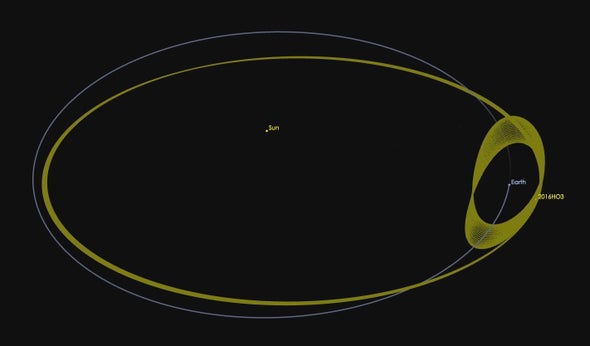There is a rock in space that has raised intrigue among astronauts. The asteroid is called Kamo`oalewa and has an odd orbit that makes it almost a mini-moon of Earth and now it is being speculated that it used to be part of the moon.
Discovered in 2016, Kamo`oalewa is around 40 m (130 ft) in width and rotates once every 28 minutes or so. It goes around the sun and the earth both. It rotates around the earth at a distance 13.6 times farther than the Moon. It sometimes moves ahead of us and is sometimes slower. This characteristic makes it a “quasi-satellite.”
The asteroid, Kamo`oalewa is close to earth but it cannot be studied closely as it is small, faint, and only visible for a few weeks every April. Hence, this year, the scientists used the Large Binocular Telescope (LBT) and the Lowell Discovery Telescope (LDT) for observing it and made this conclusion.

The team measured the object’s spectrum, the pattern of light that reflects off its surface. According to the results, it was concluded that Kamo`oalewa was mostly silicate-based when it comes to its composition.
That fingerprint didn’t match any other known near-Earth asteroid, the team says. It is believed that during an impact event, it got separated from the moon. That would make it the first known asteroid of lunar origin, and its unusual orbit lends weight to that hypothesis.

“It is very unlikely that a garden-variety near-Earth asteroid would spontaneously move into a quasi-satellite orbit like Kamo`oalewa’s,” says Renu Malhotra, co-author of the study. “It will not remain in this particular orbit for very long, only about 300 years in the future, and we estimate that it arrived in this orbit about 500 years ago.”
The research was published in the journal Nature Communications Earth and Environment.


